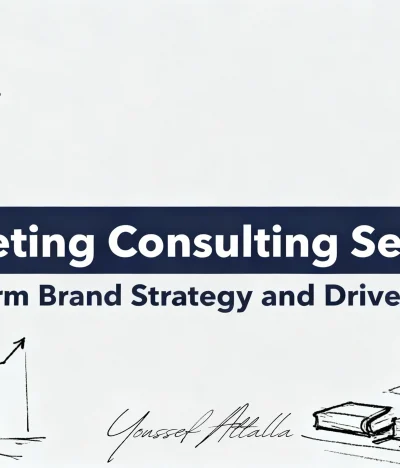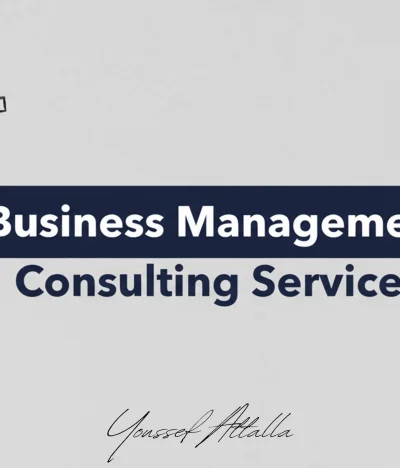Build a Scalable Business Model
Building a scalable business model is crucial for any entrepreneur aiming for long-term success. As we move into 2026, the need for adaptable and efficient growth strategies becomes even more pressing. Whether you’re a startup founder or a seasoned business owner, understanding how to expand your business while maintaining profitability is key. Let’s explore some practical steps to build a scalable business model that will help you thrive in the coming years.
Understanding Scalability
Before diving into the strategies, it’s essential to understand what scalability means. A scalable business model is one that can grow and handle increased demand without a corresponding rise in costs. This means that as your business expands, your profits should increase at a faster rate than your expenses. Working with a Business Consultant can help identify key areas where scalability is possible and guide you through structured growth.
Key Components of a Scalable Business Model
1. Efficient Processes
Streamlining your operations is a cornerstone of scalability. Efficient processes reduce waste and free up resources, allowing you to focus on growth. This involves automating repetitive tasks and using technology to enhance productivity. Consider investing in software that can manage your inventory, customer experiences, and finances all in one place.
2. Strong Financial Management
Effective financial management is crucial for scalability. Keep track of your cash flow, manage your expenses, and plan your budget carefully. It’s also wise to have a financial cushion to absorb any unexpected costs. Regular financial audits can help you identify areas for improvement and ensure your business remains profitable as it grows. Engaging with professional financial services can give your business the tools and insights needed for long-term success.
3. Flexible Infrastructure
Your business infrastructure should be flexible enough to accommodate growth. This includes your physical space, technology, and workforce. Consider cloud-based solutions that allow for easy scaling of your IT resources. Additionally, train your employees to adapt to new roles and responsibilities as the company expands. Partnering with an expert in HR services can support this transition by developing scalable talent strategies.
Growth Strategies for 2026
1. Embrace Digital Transformation
In 2026, digital transformation is not just an option; it’s a necessity. Leveraging digital tools and technologies can provide a competitive edge. This includes using data analytics to gain insights into customer behavior, adopting e-commerce platforms to reach a wider audience, and utilizing social media for marketing.
2. Focus on Customer Experience
Customer satisfaction should be at the heart of your business model. A positive customer experience leads to repeat business and referrals, both of which are crucial for growth. Invest in customer service training for your staff and consider using customer feedback to improve your products or services. Providing exceptional customer experiences builds loyalty and long-term value.
3. Expand Your Market Reach
Expanding into new markets can significantly boost your growth. This could mean targeting a different demographic, entering a new geographical region, or diversifying your product offerings. Conduct thorough market research to identify opportunities and tailor your strategies accordingly. Specialized business development services can help map the most efficient path to new market entry and expansion.
Overcoming Challenges in Scaling
Scaling a business is not without its challenges. As you grow, you may face issues such as maintaining quality, managing increased demand, and staying ahead of the competition. Here are some tips to overcome these hurdles:
1. Maintain Quality Control
As you scale, it’s important to maintain the quality of your products or services. Implement quality control measures and regular training for your staff to ensure consistency. Consider using customer feedback to continuously improve your offerings.
2. Manage Increased Demand
An increase in demand can strain your resources if not managed properly. Ensure that your supply chain is robust and capable of handling larger orders. Consider hiring additional staff or outsourcing certain tasks to meet demand without compromising on quality.
3. Stay Competitive
Staying competitive in a growing market requires innovation and adaptability. Keep an eye on industry trends and be willing to pivot your strategies as needed. Collaborate with other businesses or industry leaders to stay ahead of the curve and offer unique value to your customers.
Building a Sustainable Business Model
Sustainability is a key consideration for businesses in 2026. A sustainable business model not only benefits the environment but can also reduce costs and attract eco-conscious consumers. Here are some ways to integrate sustainability into your business:
1. Reduce Waste
Implementing waste reduction strategies can lower your costs and improve efficiency. This could involve recycling programs, using sustainable materials, or minimizing energy consumption.
2. Social Responsibility
Incorporate social responsibility into your business model. This could involve supporting local communities, ensuring fair labor practices, or donating to charitable causes. Consumers are increasingly looking to support businesses that contribute positively to society.
3. Long-Term Vision
Develop a long-term vision for your business that includes sustainable growth. Set clear goals and objectives that align with your values and mission. Regularly review and adjust your strategies to ensure they remain relevant and effective.
Conclusion
Building a scalable business model in 2026 requires careful planning, strategic thinking, and a commitment to continuous improvement. By focusing on efficient processes, financial management, and customer experience, you can position your business for sustainable growth. Embrace digital transformation, expand your market reach, and overcome scaling challenges to achieve long-term success. With the right strategies in place, your business can thrive in the dynamic landscape of 2026 and beyond.





